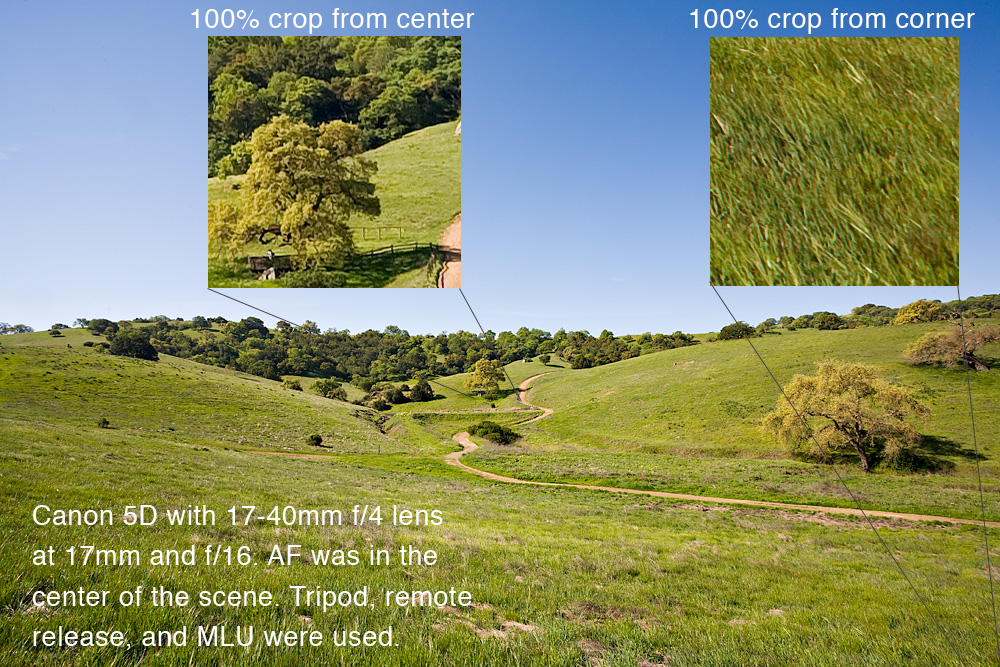You may have heard of Michael Frye – his is the book often recommended to those who want more information about shooting in Yosemite Valley, and he has a ton of experience in and knowledge of The Valley. I see that he has started new blog and that there is a RSS feed. If you photograph in The Valley and want up to date info from someone who knows his stuff, take a look.
Tag Archives: experience
Canon EOS 5D
Having used my Canon EOS 5D extensively for about two years, I figure it is about time for me to write up something about my experiences with and impressions of this camera. Rather than try to compete with the existing camera review sites and post a bunch of technical specifications and test results, I’m going to focus on aspects of the camera that may give a better general idea of its strengths and weaknesses and of situations for which it is best adapted. Continue reading Canon EOS 5D
Lowepro Inverse 200 AW
It seems like no matter how many camera bags you have, you never have too many. I have quite a collection, ranging from some rather large ones that I use for travel (Thinktank Airport Acceleration) or for serious photography on the trail (“Lowepro Rover Plus AW”) to smaller bags like the “Lowepro Slingshot 200 AW” and one of the Lowepro Topload Zoom bags. Each of these has a relatively specific role in my photography.
Even with all these bags there has been one sort of situation for which I’m ill-equipped: carrying minimal gear on walking/hiking trips, perhaps just the camera/lens or perhaps with the addition of one extra lens, water, and a few small non-photography essentials. I’ve used non-photography lumbar packs and small backpacks, but they don’t really work the way I like for photography.
I recently had a chance to use the Lowepro Inverse 200 AW bag, and it seems like it may fill this gap for me. Continue reading Lowepro Inverse 200 AW
Corner Sharpness of the Canon 17-40mm f/4 L Lens on Full Frame
Since the question of how the Canon EF 17-40 f/4 L performs across the frame for landscape photography comes up periodically, I have posted an older test photo I made last year (2007) – updated here to include a comparison corner and center sharpness.
Technical data: Canon 5D. Canon EF 17-40mm f/4 L lens. Focal length: 17mm. Aperture: f/16. Shutter speed: 1/60 second. Shot on the tripod with MLU and remote release. If the full image were reproduced at this resolution the print would be about five feet wide. (Not that I’d do that – it is a really boring photograph! :-) In a more typical size print the corners would like very good, indeed.
A 100% crop would not be expected to be “razor sharp” – and we see typical results here. It is impressive to see how well the corner image quality holds up – despite the fact that grass is one of the most challenging subjects for a digital sensor and the fact that this part of the scene was much closer to the camera than the focus point in the center of the scene – i.e. the corner section showing the grass is only a few feet from the camera, and the camera is focused hundreds of feet away on the objects in the center of the frame. (On that subject, I’m convinced that a good number of the reports of “poor corner performance” in ultra wide lenses are actually due to the subjects in the corner being much closer to the camera position than the subjects in the center of the frame, especially when the “tests” are done by shooting actual landscape subjects.)
BOTTOM LINE: What does this tell us, how do we view this in the context of reports of soft corners on the EF 17-40mm f/4 lens, and what does this mean for anyone trying to choose a wide (or ultra-wide in the case of full-frame cameras) Canon zoom lens?
While this lens is soft in the corners when shot wide open, the lens is not particularly soft in the corners when stopped down. If your primary use for such a lens is, for example, shooting very low light handheld wide angle photographs the 17-40 is perhaps not your best choice. (The EF 16-35mm f/2.8 on full frame or the EFS 17-55mm f/2.8 IS on a cropped sensor body could be more appropriate zooms.) On the other hand, if you are primarily interested in subjects that are usually shot at smaller apertures (urban/wild landscapes, architecture, etc.) then the 17-40 can be an outstanding lens – though this is more true on a full frame body than on a crop body, given that you are unlikely to use the smaller apertures on a crop sensor body given the diffraction blur issues there. So, to state it very succinctly…
… the Canon EF 17-40mm f/4 lens is an excellent lens for shooting deep DOF small-aperture photography on a full-frame camera. (It is OK but not necessarily ideal for use with cropped sensor bodies, where I would prefer the EFS 17-55mm f/2.8 IS.)
G Dan Mitchell is a California photographer whose subjects include the Pacific coast, redwood forests, central California oak/grasslands, the Sierra Nevada, California deserts, urban landscapes, night photography, and more.
Blog | About | Flickr | Twitter | Facebook | Google+ | 500px.com | LinkedIn | Email
Text, photographs, and other media are © Copyright G Dan Mitchell (or others when indicated) and are not in the public domain and may not be used on websites, blogs, or in other media without advance permission from G Dan Mitchell.

